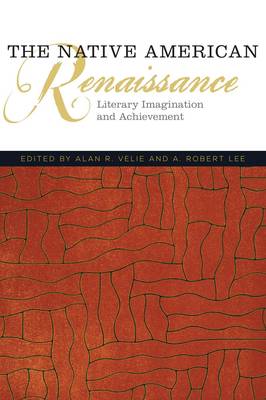
Door een staking bij bpost kan je online bestelling op dit moment iets langer onderweg zijn dan voorzien. Dringend iets nodig? Onze winkels ontvangen jou met open armen!
- Afhalen na 1 uur in een winkel met voorraad
- Gratis thuislevering in België vanaf € 30
- Ruim aanbod met 7 miljoen producten
Door een staking bij bpost kan je online bestelling op dit moment iets langer onderweg zijn dan voorzien. Dringend iets nodig? Onze winkels ontvangen jou met open armen!
- Afhalen na 1 uur in een winkel met voorraad
- Gratis thuislevering in België vanaf € 30
- Ruim aanbod met 7 miljoen producten
Zoeken
The Native American Renaissance
Literary Imagination and Achievement
€ 34,95
+ 69 punten
Omschrijving
Volume 59 in American Indian Literature and Critical Studies Series The outpouring of Native American literature that followed the publication of N. Scott Momaday's Pulitzer Prize-winning House Made of Dawn in 1968 continues unabated. Fiction and poetry, autobiography and discursive writing from such writers as James Welch, Gerald Vizenor, and Leslie Marmon Silko constitute what critic Kenneth Lincoln in 1983 termed the Native American Renaissance. This collection of essays takes the measure of that efflorescence. The contributors scrutinize writers from Momaday to Sherman Alexie, analyzing works by Native women, First Nations Canadian writers, postmodernists, and such theorists as Robert Warrior, Jace Weaver, and Craig Womack. Weaver's own examination of the development of Native literary criticism since 1968 focuses on Native American literary nationalism. Alan R. Velie turns to the achievement of Momaday to examine the ways Native novelists have influenced one another. Post-renaissance and postmodern writers are discussed in company with newer writers such as Gordon Henry, Jr., and D. L. Birchfield. Critical essays discuss the poetry of Simon Ortiz, Kimberly Blaeser, Diane Glancy, Luci Tapahonso, and Ray A. Young Bear, as well as the life writings of Janet Campbell Hale, Carter Revard, and Jim Barnes. An essay on Native drama examines the work of Hanay Geiogamah, the Native American Theater Ensemble, and Spider Woman Theatre. In the volume's concluding essay, Kenneth Lincoln reflects on the history of the Native American Renaissance up to and beyond his seminal work, and discusses Native literature's legacy and future. The essays collected here underscore the vitality of Native American literature and the need for debate on theory and ideology. Alan R. Velie is Professor of English at the University of Oklahoma and author of American Indian Literature: An Anthology, published by the University of Oklahoma Press. A. Robert Lee is retired as Professor of American Literature at Nihon University, Tokyo, Japan, and is the author or editor of numerous books, including Native American Writing and Multicultural American Literature: Comparative Black, Native, Latino/a, and Asian American Fictions, which won the 2004 American Book Award.
Specificaties
Betrokkenen
- Uitgeverij:
Inhoud
- Aantal bladzijden:
- 368
- Taal:
- Engels
- Reeks:
- Reeksnummer:
- nr. 59
Eigenschappen
- Productcode (EAN):
- 9780806144023
- Verschijningsdatum:
- 5/11/2013
- Uitvoering:
- Paperback
- Formaat:
- Trade paperback (VS)
- Afmetingen:
- 155 mm x 231 mm
- Gewicht:
- 521 g

Alleen bij Standaard Boekhandel
+ 69 punten op je klantenkaart van Standaard Boekhandel
Beoordelingen
We publiceren alleen reviews die voldoen aan de voorwaarden voor reviews. Bekijk onze voorwaarden voor reviews.










